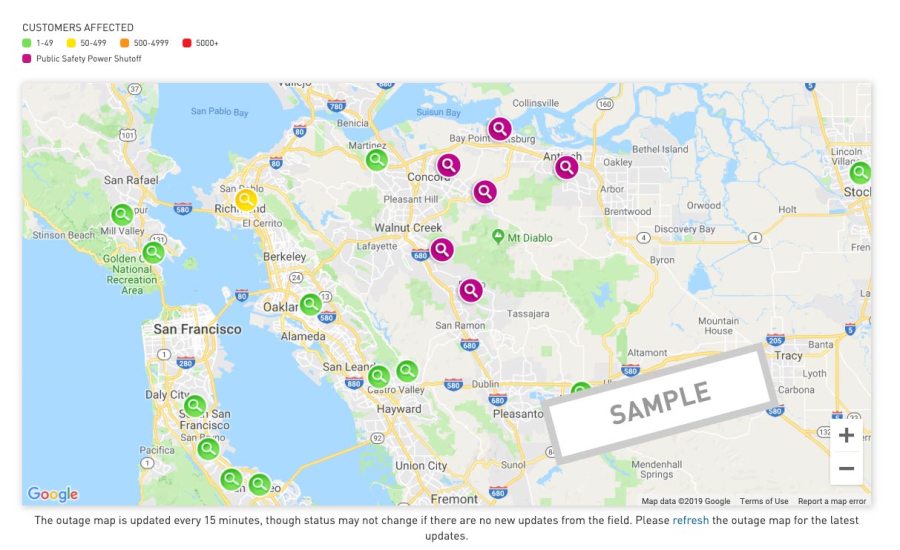SAN FRANCISCO (KRON) – The Santa Rosa Fire Department on Friday tweeted to the community reminding them of “tools and resources available to monitor and prepare for potential outages.”
But this led to some confusion once the department mentioned an “elevated risk of PSPS” for parts of the North Bay on Monday and Tuesday.
“An ‘elevated’ risk status is PG&E’s lowest threshold level for potential power outages,” the fire department added in the tweet.
But this got some people wondering – what exactly is PSPS and why should the public be concerned? What are the signs to look out for?
Here are some of the answers to those questions and more on what you need to know about PSPS:
What is PSPS?
PSPS stands for Public Safety Power Shutoff.
PSPS may be brought on for public safety when it may be necessary to turn off electricity during very dry and windy conditions, combined with a heightened fire risk.
PG&E says while customers in high-fire threat areas are more likely to be affected, any of PG&E’s customers could have their power shut off because the energy system relies on power lines working together to provide electricity across cities, counties, and regions.
During this time, outages could last several days, according to officials.
How will PG&E determine the need for PSPS?
There are several factors PG&E reviews when determining if a PSPS is needed, including:
- Red Flag Warning
- Low humidity levels, generally 20% and below
- Forecasted sustained winds generally above 25 mph and wind gusts exceeding 45 mph
- Condition of dry fuel on the ground and live vegetation (moisture content)
- On-the-ground, real-time observations from PG&E crews
How often will these PSPS’s happen?
PG&E says this could happen several times a year depending on weather conditions.
Officials said while customers in high-fire threat areas are more likely to be affected, any customer could have their power shut off if their community relies upon a line that passes through a high-fire threat area.
How will I know if I’ll be impacted?
Officials said the most-likely electric lines to be considered for a PSPS will be those that pass through areas that have been designated by the California Public Utilities Commission High Fire-Threat District map as Tier 2 or Tier 3 for wildfire. You can check a PDF of that map here: Aside from the map, PG&E advises you to monitor the PSPS event page as well as follow local news and media for the latest updates. You can also check the “Current Outages” map to check PSPS events marked by purple flags or purple polygons. If you are a PG&E-account holder, you cannot opt out of any of the advance notifications. Account holders can however opt out of updates during the PSPS, which will only be in effect for the specific outage and will not carry over to any future outages. Non-PG&E-account holders may opt out of PSPS ZIP Code Alerts (for non-account holders) at any time. The opt-out request will be permanent. If you change your mind and want to receive future outage alerts, non-account holders must re-enroll for PSPS ZIP Code Alerts. Officials say each situation will be different but PG&E expects to inspect the system for damage and restore power to most customers within 24 to 48 hours after extreme weather has passed. However, PG&E says customers should be prepared for outages that could last longer than 48 hours because extreme weather can last several hours or days. What you can do to be prepared
PG&E will use the contact information associated with your PG&E account to reach you, so it is advised PG&E has your correct email address and phone numbers. PSP ZIP Code Alerts for non-account holders directly from PG&E. For more resources, click here. Latest News Headlines:
Can I opt out of alerts?
How long will the outage last?